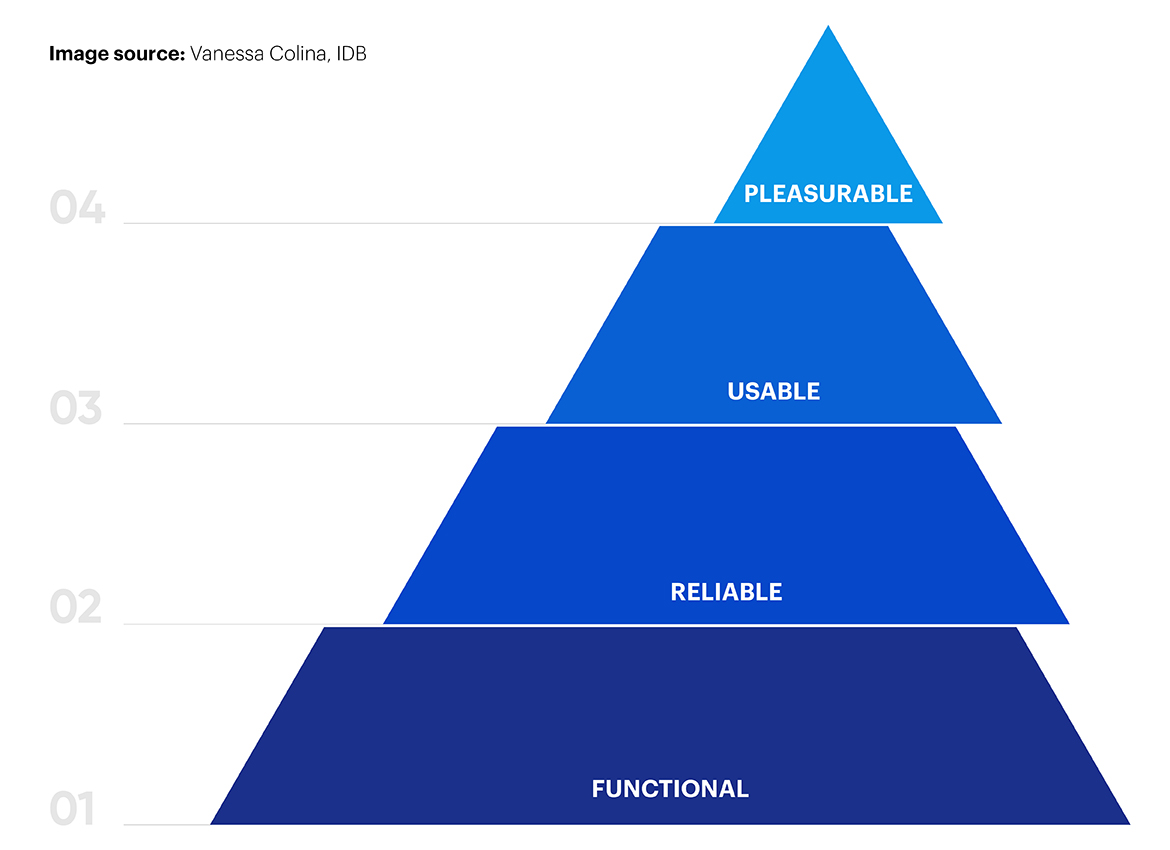The covid-19 pandemic has had a huge impact and serious impact on people’s daily lives, on the other hand, becoming an initiative to make the digital transition more rapid and urgent. In the context of reducing and limiting travel and close-contact activities, the construction and commissioning of digital applications is an urgent task, in order to create the best conditions for people to adapt to the “new normal” status.
The current state of development and digital applications in public services
In the U.S., the Center for Digital Government surveyed citizens in March 2020 before the Covid-19 pandemic and once again in August 2020 to learn about their changing expectations with digital government services. Before the pandemic, 54% of respondents preferred direct government services, which was later reduced to about 16%. People’s satisfaction with digital services has dropped more seriously during the pandemic, indicating that the Digital Government still needs to take great steps in order to achieve people’s satisfaction. So, what do people expect in the process of using public services? The survey found that satisfaction with government digital services fell by about 13% due to longer waiting queues, poor customer service, and overly complex processes. At the same time, 60% of respondents agreed with the government’s desire to experiment with the application of digital technologies that contribute to the modernization of services (1).
In Vietnam, 2020 is considered a year when national digital transformation programs are strongly promoted, along with that, digital platforms with a high possibility of usage, targeting the community, and serving people are also focused on development. A series of applications and platforms in the top priority fields such as Education, Health and information declaration management, applications supporting online conference platforms such as K12Online, Online Math, VNPT E-learning, Azota, Viettel Telehealth, NCOVI, Vietnam Health Declaration, Bluezone, Electronic Health Book, Immunization Portal, Zavi platform, CoMeet, Stringee,… In 2021, the Government also strengthened the transition of old ID numbers to new identification numbers, along with new ID cards with chips attached, one of the tasks contributing to building the National Database on Population to serve the procedures, people’s transactions are convenient, highly effective in data management, and timely contribution to the prevention and control of covid-19. However, the rampant development of applications in a short time also brings many problems in the process of implementation. One specific example for this is the fact that there are more than 20 apps were born for the same purpose: Medical declaration and registration as well as keeping vaccination information. A large number of these applications put managers, businesses, people as well as task-executors in a confused and awkward situation when there is no timely guidance on which type of mainstream application to use. In addition, the data displayed on vaccination information is also inaccurate, making it difficult to build people’s trust in modern digital tools. The use of online learning apps with students at all levels also received much negative feedback from parents, for the largely common reasons: the app is not user-friendly, hard to understand and use, had a lot of bugs, and the outdated interface is not easy on the eye (2).
E-Government Strategy in Vietnam aims to improve people’s quality of life
Intending to put Vietnam in the top 50 countries in both the overall index, electronic participation index as well as the open data index, “the e-Government Development Strategy towards the Digital Government in the period of 2021-2025, the orientation until 2030” has set out 5 objectives until 2025 including: Provide quality services for society; widely mobilize the participation of society; optimize operation of the activities of state agencies; effectively solving major problems in socio-economic development; revolutionize national ranking. In which focused on:
- Digital platforms serve to simplify the paperwork process: people and businesses use digital services to be able to carry out paperless procedures online in a more convenient, easy, simple, and fast way, without the need for physical presence if not required by the law.
- Digital platform for the health sector: building health records of each citizen, implementing the management of commune/ward health stations in the digital environment. Each medical examination and treatment facility implement remote medical examination, counseling, and treatment services based on actual needs. Hospitals and public health centers deploy medical records and electronic prescriptions and non-cash payment services.
- Digital platform serves the field of education: building personal learning profiles for students. Implementing digital universities, changing teaching and learning models to optimize the operation of higher education institutions, paying tuition fees online, building a new learning environment applying technology to help improve the learning experience of students.
- Digital platform for agricultural production activities: helping farmers access, exploit and effectively use digital data platform on agriculture, traceability platforms, reduce dependence on intermediaries from production, distribution to consumers.
- Digital platform for business activities: building applications to help people, individual business households, businesses can easily exchange information, send, receive electronic invoices and with tax authorities using digital technology platforms.
Some proposals to improve the user experience in public service digital applications
User experience is now one of the top priorities for businesses. Once the customer does not have the expected smooth experience, brand credibility will be reduced, leading to customers falling into the hands of competitors. But that doesn’t happen in the public sector. Users have only one option, and their experience usually gets neglected. This does not mean that public services can ignore the issues of upgrading the quality of service. Poor public service experiences will cause frustration for citizens, impact trust and credibility, and build negative perceptions of the Government. Therefore, in the process of building e-government, with the development of digital platforms to make people’s lives easier and more convenient, it is necessary to pay attention to issues based on the real needs of users.
According to Aaron Walter’s ladder model of users’ needs, the needs of users are arranged from low to high including: functioning properly, being reliable, easy to use and bringing enjoyment.

1. Functionality
A properly functioning platform is a fully functional digital platform that meets the goals and needs of the people. Examples of tax services: people when visiting websites or apps to file a tax return, find information about claims or purchases, find tax authority contact details, make appointments, and so on. If these basic features do not exist nor work, this service has failed to serve its basic core purpose. When building digital platforms in the public sector, it is always essential to be fully functional by answering questions about: What are the purposes, needs, and expectations of users? How do users achieve these goals efficiently?
2. Enhanced reliability
As mentioned above, people look to the Government to carry out activities and use essential services for life-related to personal interests, health, finance, education,… So these services need to be available and build strong trust from the first step. One of the most well-known government website errors was the launch of Obama’s healthcare.gov. With nearly $100 million behind the project, the site launched in 2013 and quickly crashed because of high demand. As soon as it returned online, users had problems with the site being deficient, and insurance companies forwarded incomplete and inaccurate user data. 250,000 citizens visited the site on the day it launched, and by the end of the day only 6 had completed and submitted their applications. This contributes largely to the disappointments and failures of the project. To ensure that these situations do not occur, the system managers need to forecast the scale of use of the digital platform, so as not to cause unexpected collapses that spiral out of their control.
3. Easy to use
When building a website system, digital application, in addition to the basic elements of functionality and traffic, the next step is to give users an easy experience when interacting with the service. To achieve this, pay attention to ensuring that the built-in website or system is easily navigated, the language is simple enough to understand, and guides people to perform tasks and accomplish goals realistically, and is suitable to all citizens of all ages.
4. Bringing enjoyment
When a service is up and running, reliable, and usable, it’s basically ready to launch. However, one of the main differences between public and private websites is that the top of the user needs to have a hierarchy: pleasant. Along with the rise of younger generations, with the ability to use and update technology and the increasing expectations and requirements of experience, improving the system, making websites and applications more interesting will increase the level of cohesion as well as the coverage of public services to all groups of people.
The construction of digital systems and platforms as well as e-government takes time, and cannot be done overnight. However, small step-by-step changes to government services are likely to have a major impact on people’s lives and need to be started early, especially in the right direction to achieve the ultimate goal: to deliver the best for the people.
Reference sources:
(1) Govtech. 2020 Digital Citizen Services: The New Imperative
(2) Decision No. 942/QD-TTg of the Prime Minister: Approving the Strategy to develop e-Government towards digital government in the period of 2021-2025, with a vision to 2030


